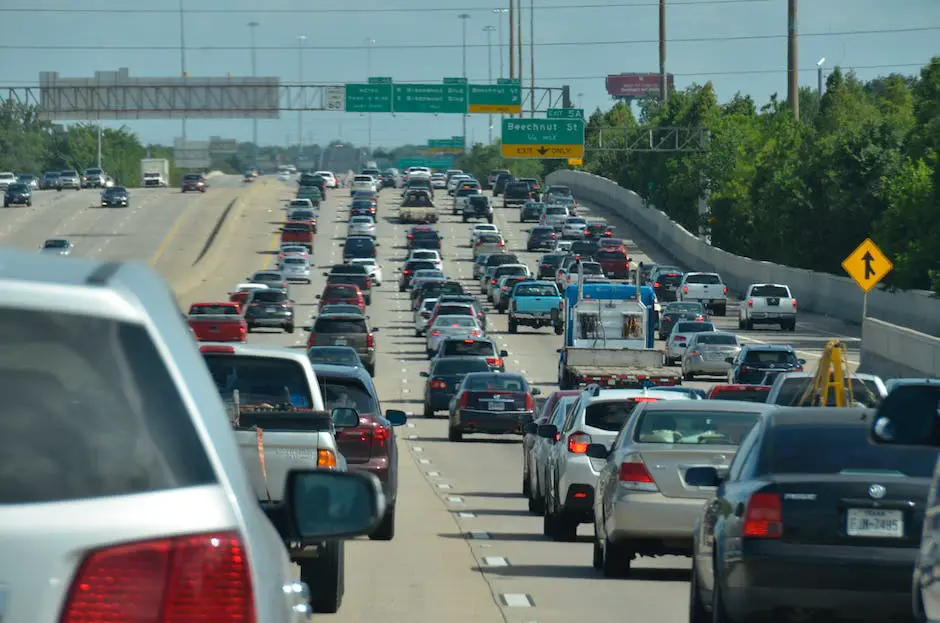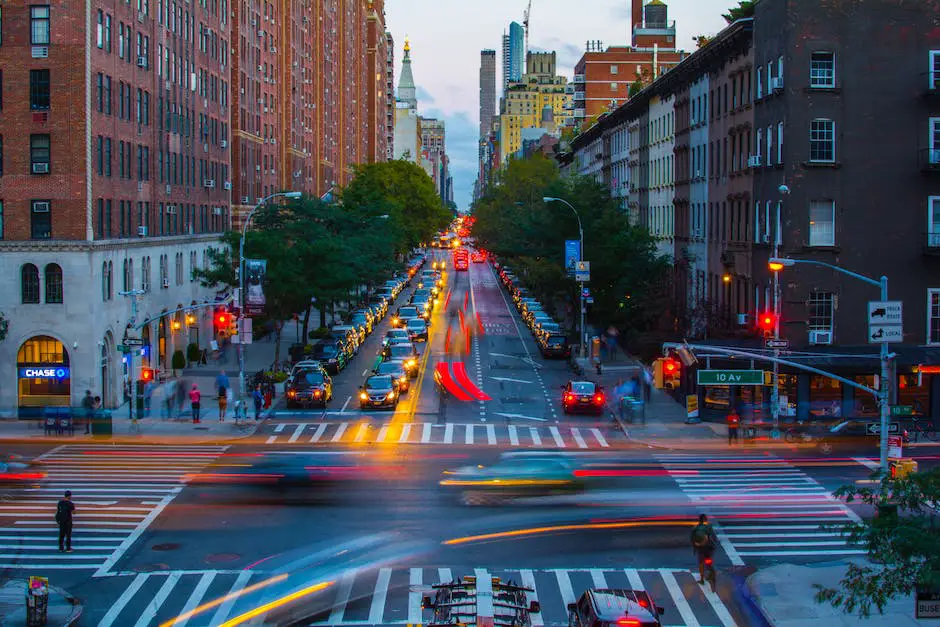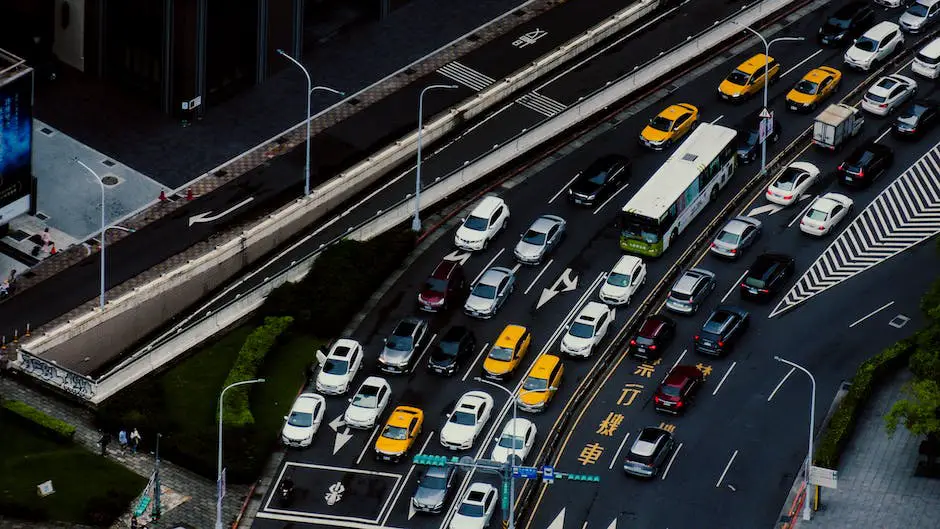Traffic jams have become a ubiquitous aspect of modern life, impacting individuals, businesses, and society as a whole. With every city experiencing congested streets and highways, it is essential to understand the reasons behind traffic jams and their consequences, as well as ways to manage and mitigate their impact on our daily lives. This article delves into the various causes and effects of traffic jams, providing insight into valid excuses for being late, and offering solutions for reducing traffic congestion and dealing with lateness excuses in professional settings.
Causes of Traffic Jams
Causes of Traffic Jams
Traffic jams have become a common and frustrating issue for commuters and drivers alike. While the primary factors leading to traffic jams may differ, some of the most common causes include road construction, accidents, poor weather conditions, special events, and an increasing number of vehicles on the road. Understanding these causes can help individuals better navigate their daily commutes, minimize delays, and avoid contributing to traffic congestion.
Road Construction
One of the main reasons behind traffic jams is road construction. Road construction, necessary for maintaining and improving the transportation infrastructure, can lead to temporary lane closures, detours, and reduced speed limits. These changes can create bottlenecks in traffic flow, leading to increased congestion and longer travel times. Additionally, construction zones can cause confusion and frustration among drivers, increasing the likelihood of accidents that contribute to further traffic delays.
Accidents
Accidents are another significant cause of traffic congestion. When an accident occurs, traffic often comes to a halt as drivers slow down to observe the scene or avoid debris. Moreover, accidents often require emergency vehicles to attend the scene, potentially blocking lanes and impeding the flow of traffic. The presence of accidents not only results in immediate traffic delays but can also cause ongoing congestion as traffic flow attempts to normalize later on.
Poor Weather Conditions
Adverse weather conditions can significantly impact traffic conditions and contribute to traffic jams. Heavy rain, snow, fog, or icy conditions can reduce visibility and create slippery road surfaces, requiring drivers to reduce their speed and maintain a greater distance between vehicles. In turn, this can lead to slower traffic flow and increased congestion. Additionally, poor weather can exacerbate existing traffic issues, such as accidents or construction zones, by making it harder for drivers to navigate these challenges safely and efficiently.
Special Events
Large events, such as concerts, sporting events, or festivals, can lead to a significant increase in traffic in a particular area. The influx of vehicles can quickly overwhelm local roads, causing congestion and delays as drivers search for parking or attempt to arrive at the event venue. After the event concludes, the high volume of vehicles attempting to exit the area simultaneously can result in further traffic congestion. Furthermore, special events can also lead to temporary road closures or changes in traffic patterns, exacerbating existing congestion issues.
Increasing Number of Vehicles on the Road
Traffic congestion is also affected by the growing number of vehicles on the road. With a continually increasing population and expanding urban areas, more people are relying on personal vehicles for transportation. This increased demand on the road infrastructure can lead to daily traffic congestion during peak commuting hours, particularly in large metropolitan areas. The high volume of vehicles on the road also contributes to a higher likelihood of accidents and slower overall traffic flow.
Introduction
Traffic jams have become a common phenomenon, affecting the daily lives of many individuals. They are caused by various factors such as road construction, accidents, poor weather conditions, special events, and the increasing number of vehicles on the road. As the population continues to rise and urban areas expand, these causes are expected to persist, leading to ongoing traffic congestion. Being aware of these factors can help drivers be more prepared when planning their routes and give them insight into potential delays they may encounter.

Effects of Traffic Jams
Consequences of Traffic Jams
Traffic congestion has a significant impact on individuals, one of which is increased stress levels. As people spend more time in congested traffic, their frustration grows, potentially resulting in aggressive driving and road rage incidents. This prolonged stress can have negative consequences on mental health and overall well-being, especially for those who regularly commute in high-traffic areas.
Furthermore, extended periods in traffic jams lead to a considerable reduction in personal time. Lengthy commutes take away from time dedicated to pursuing hobbies, socializing with friends and family, and exercising. Consequently, this decrease in personal time can contribute to a lower quality of life, coupled with heightened feelings of isolation and dissatisfaction.
Increased Fuel Consumption and Air Pollution
Traffic jams often lead to excessive fuel consumption as vehicles idle while waiting for traffic to clear. This spike in fuel consumption contributes to increased greenhouse gas emissions and air pollution. In highly congested areas, this can create poor air quality, which poses a risk to both human health and the environment, leading to respiratory issues and aggravating existing conditions such as asthma.
Furthermore, noise pollution is another consequence of traffic jams, as the increased number of vehicles on the road generates higher noise levels. This noise can negatively affect people’s quality of life, particularly for those who live close to high-traffic areas, causing sleep disturbances and other stress-related health issues.
Economic Losses
Traffic jams can lead to significant economic losses for businesses and society as a whole. For businesses, they may experience reduced employee productivity due to employees arriving late to work or feeling stressed from long commutes. In fact, some studies have shown that longer commuting times are associated with lower job satisfaction and increased employee turnover.
Additionally, traffic jams can disrupt the flow of goods and services, leading to delayed deliveries and higher transportation costs. These delays in logistics can not only increase operational costs for businesses but can also impact consumers through higher prices and limited availability of products.
Alternative Solutions and Public Transportation
The growing issue of traffic jams has led many cities and nations to invest in alternative solutions to address the congestion problem. One approach is to improve public transportation systems, such as buses, trains, and subways, offering a more efficient and environmentally friendly means of transportation.
Encouraging the use of carpooling and ridesharing services can also help alleviate congestion by reducing the number of vehicles on the road. Implementing congestion pricing, where drivers are charged fees for entering high-traffic areas during peak hours, can encourage the use of alternative modes of transportation or travel during off-peak times.
Conclusion
In conclusion, traffic jams negatively impact individuals, businesses, and society as a whole. They contribute to stress levels, increased fuel consumption, air pollution, and economic losses. By investing in alternative solutions and improving public transportation systems, communities can work towards mitigating these consequences and develop a more sustainable, efficient transportation network.

Valid Traffic Jam Excuses
Medical Emergencies as a Cause of Traffic Jams
One specific situation that can trigger a traffic jam is a medical emergency, either occurring directly on the road or involving a person in a vehicle. When an ambulance or emergency response vehicle must access the site of an accident or transport a patient to a hospital, other drivers must make way, leading to traffic disruptions and potential delays. In such scenarios, citing a traffic jam as a reason for one’s late arrival is legitimate. Similarly, if a driver encounters a personal medical emergency, such as a heart attack or anaphylactic shock, pulling over to the side of the road can cause congestion and hinder the flow of traffic.
Public Transport Delays
Commuters who rely on public transport can also be affected by traffic jams on their way to work or other destinations. Road congestion can cause delays in the schedules of buses and trams, leading to a legitimate excuse for individuals who are running late. Delays in public transport can be exacerbated if the traffic affects multiple lines, as passengers scramble to find alternative routes and a domino effect ensues, worsening the situation. In major cities, disruptions in public transport can have a significant impact on a large number of commuters.
Unpredicted Severe Traffic Situations
There are times when traffic congestion occurs unexpectedly due to unforeseen circumstances. These might include: natural disasters such as heavy rain, snow or flooding that affect road conditions; heavy fog that restricts visibility and slows vehicles; vehicle accidents causing blockages or closures; or other unexpected events like roadwork or a procession for a special event. In these instances, travelers are considered to have a valid excuse for being delayed due to a traffic jam, as the cause of the congestion is outside of their control.
Lack of Alternative Routes
Sometimes, traffic jams can occur on roads that serve as primary routes for many travelers, and alternative routes may not be readily available or practical. In these instances, drivers may find themselves with no other option but to wait out the congestion. An example can be a highway experiencing a closure due to an accident blocking all lanes, leaving drivers with no choice but to remain in their vehicles until the accident is cleared. In such cases, it is reasonable for an individual to be delayed due to traffic.
As the general public, it is crucial to become informed about the various situations that can lead to valid traffic jam excuses and to empathize with individuals affected by them. Road congestion occurs for numerous reasons and is often unavoidable. Still, those impacted by these circumstances must take responsibility for their time management and communicate any delays they may experience while traveling. Demonstrating patience and understanding can go a long way in navigating the complex world of traffic jams and delays, and learning about ways to mitigate these problems can benefit everyone.

Preventing Traffic Jams
Introduction to Preventing Traffic Jams
For many commuters across the United States, traffic jams are an unfortunate reality contributing to wasted time, increased fuel consumption, and air pollution. To alleviate traffic congestion, it is necessary to implement a blend of short and long-term strategies. This article discusses various approaches to minimizing or preventing traffic jams, such as improving public transportation systems, promoting carpooling, encouraging flexible work hours, and investing in advancements in traffic management. By exploring and adopting these methods, we can strive for a more efficient and environmentally-friendly transportation system.
Improving Public Transportation Systems
One of the most effective strategies for reducing traffic congestion is the development and expansion of public transportation systems. By offering commuters a viable alternative to driving, public transportation can help decrease the number of cars on the road during peak hours. This can be achieved through the construction of additional train lines, the introduction of fast and efficient bus services, and the promotion of affordable ticket prices. Future urban planning efforts should prioritize pedestrian-friendly and transit-oriented designs that encourage public transit usage.
Promoting Carpooling
Carpooling is another efficient way to reduce traffic congestion by reducing the number of single-occupancy vehicles during peak commuting times. Utilizing carpool lanes can also provide drivers with a faster and more efficient commute. Encouraging carpooling can be done by implementing rideshare programs within organizations, providing incentives for carpool participants (such as discounted parking fees), and using carpooling apps that connect drivers and riders with similar routes. By sharing rides, commuters can save money on gas and vehicle maintenance, reduce their carbon footprint, and potentially shorten their travel time.
Flexible Work Hours and Remote Work
Flexible work hours, including compressed workweeks or staggered work hours, can help alleviate traffic congestion by distributing commute times more evenly throughout the day. By allowing employees to start and end work at different times, organizations can reduce the number of cars on the road during peak rush hours. Additionally, remote work options enable employees to avoid commuting altogether, which can significantly lessen traffic congestion. The COVID-19 pandemic has demonstrated that many organizations can effectively operate with remote employees, and this trend could continue even after public health concerns subside.
Advancements in Traffic Management
Improving traffic management through the implementation of advanced technologies and intelligent transportation systems can help minimize traffic jams. This includes traffic signal coordination, which allows traffic signals to communicate with each other for better flow, and ramp metering, which controls the rate at which vehicles enter highways to ensure optimal traffic flow. Real-time traffic monitoring systems can also direct drivers to alternative routes during peak hours or in case of accidents, reducing the likelihood of further congestion. In the longer term, the development of autonomous vehicles and new infrastructure that integrates smart technologies may contribute to even more efficient traffic management.
Conclusion
In conclusion, addressing traffic jams requires a comprehensive approach that combines various strategies, such as promoting public transportation, encouraging carpooling, implementing flexible work hours, and utilizing advancements in traffic management systems. By adopting these measures, we can work towards a more efficient and sustainable transportation system, reducing the impact of traffic congestion on our daily lives, the economy, and the environment.

Dealing with Traffic Jam Excuses
Verifying Traffic Jam Excuses
In relation to traffic jam excuses, it’s crucial for both employers and employees to ensure the accuracy of the information provided. Employers should pay attention to patterns in an employee’s tardiness due to traffic and keep a record of these occurrences. To confirm the legitimacy of traffic-related excuses, employers can use online tools or apps that offer real-time traffic reports and updates. This information will enable them to verify if an employee’s tardiness is genuinely caused by traffic congestion.
Meanwhile, employees must maintain honesty and transparency when explaining their traffic-related delays. It’s essential to notify supervisors promptly about any potential tardiness caused by traffic congestion and provide accurate information about the traffic situation.
Promoting Punctuality
To minimize the impact of traffic jams on productivity and workplace culture, both employers and employees must prioritize punctuality. Employers can encourage punctuality by setting clear expectations and providing incentives for being on time. They can also offer training sessions on time management and stress the importance of punctuality in maintaining productivity and a healthy workplace environment.
Employees should make an effort to leave for work early, taking into account the possibility of traffic jams. They should also be aware of their travel routes and consider alternate options if needed. Traffic and navigation apps can be helpful in predicting the best routes and departure times to avoid heavy traffic.
Offering Remote Working Options
One effective way to deal with traffic jam excuses while maintaining productivity is by offering remote working options whenever possible. Employers should evaluate the feasibility of allowing employees to work remotely or implement a flexible work schedule. This flexibility can help employees avoid peak traffic hours and reduce the likelihood of tardiness.
Remote working can benefit both employers and employees. Companies that offer remote work options often see increased productivity, reduced turnover, and improved overall employee satisfaction. On the other hand, employees who work remotely can save time and money on commuting, while enjoying more flexibility and a better work-life balance.
Encouraging Open Communication
Open communication plays a crucial role in addressing the issue of traffic jam excuses and its impact on the workplace. Employers should create an environment where employees feel comfortable discussing any issues that may affect their punctuality. Employers must also be understanding of employees’ situations and provide support when needed.
Employees should be proactive in discussing their travel-related issues with their supervisors. Being honest about their tardiness and offering solutions to minimize its impact on their work will help maintain their credibility and professionalism.
Conclusion
In conclusion, effectively dealing with traffic jam excuses requires a combination of verifying information, promoting punctuality, offering remote working options, and encouraging open communication. These strategies will help minimize the impact of traffic-related tardiness on productivity and workplace culture, benefiting both employers and employees.

As discussions surrounding traffic jams continue to evolve, it is crucial to be aware of the factors contributing to congestion, the validity of traffic jam excuses, and the potential solutions for prevention and management. By adopting an informed approach to this widespread issue, we can make significant strides toward a more efficient, sustainable, and stress-free future for all road users. Meeting this challenge will require a multi-faceted, cooperative approach involving individuals, employers, and policymakers, but just as with many issues of the modern age, the potential benefits of overcoming traffic congestion far outweigh the challenges we face along the way.

Recent Comments